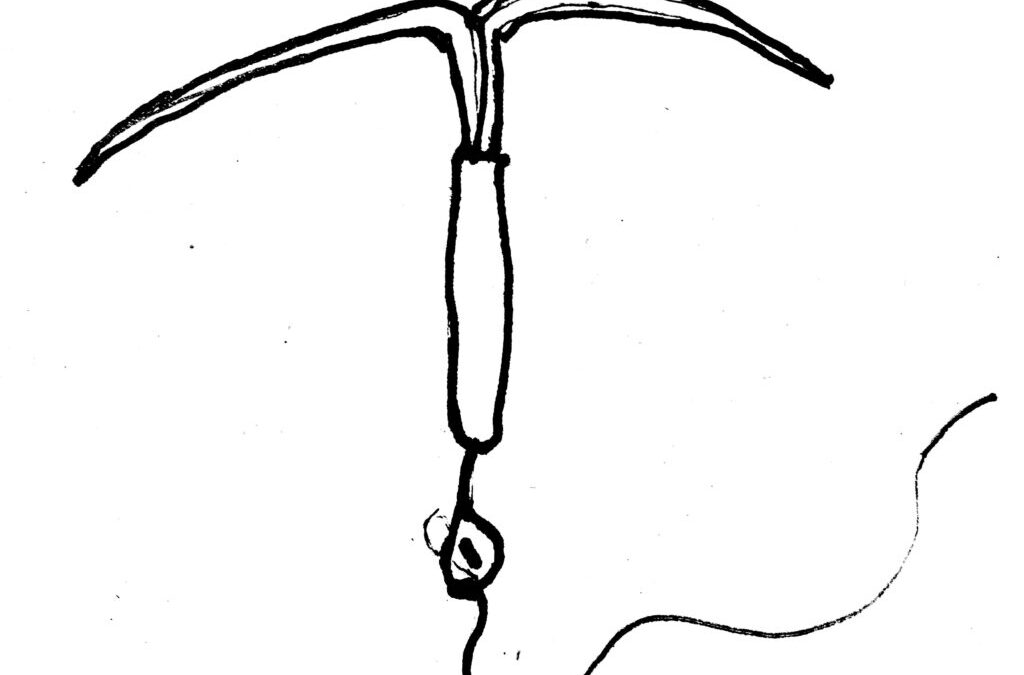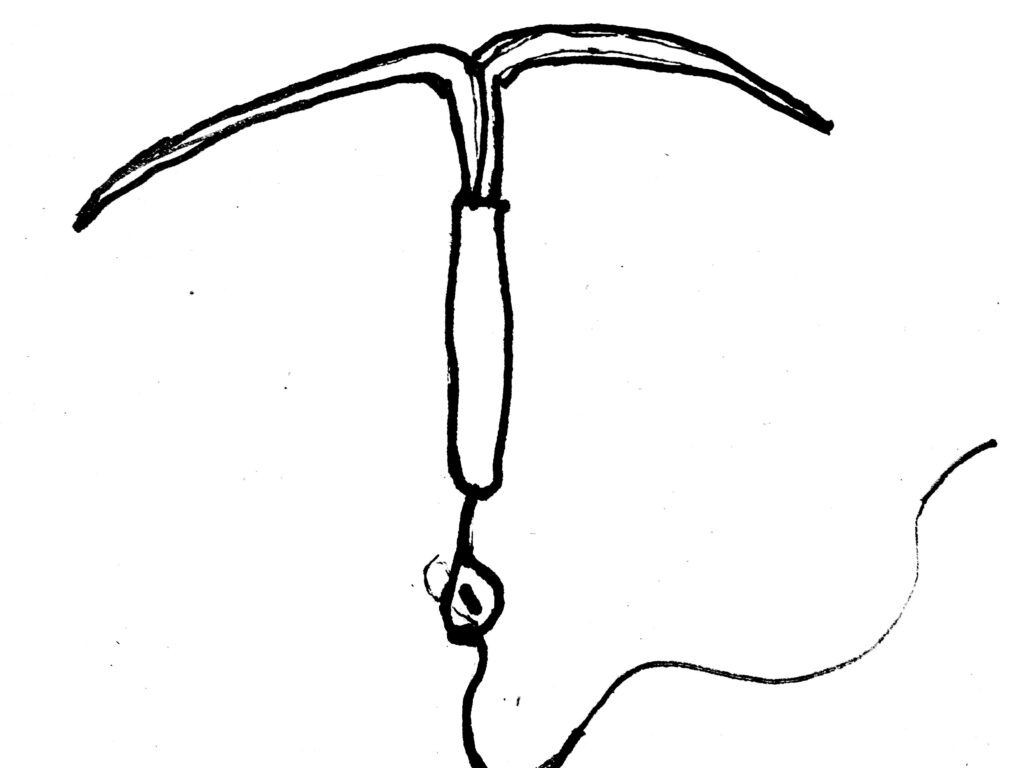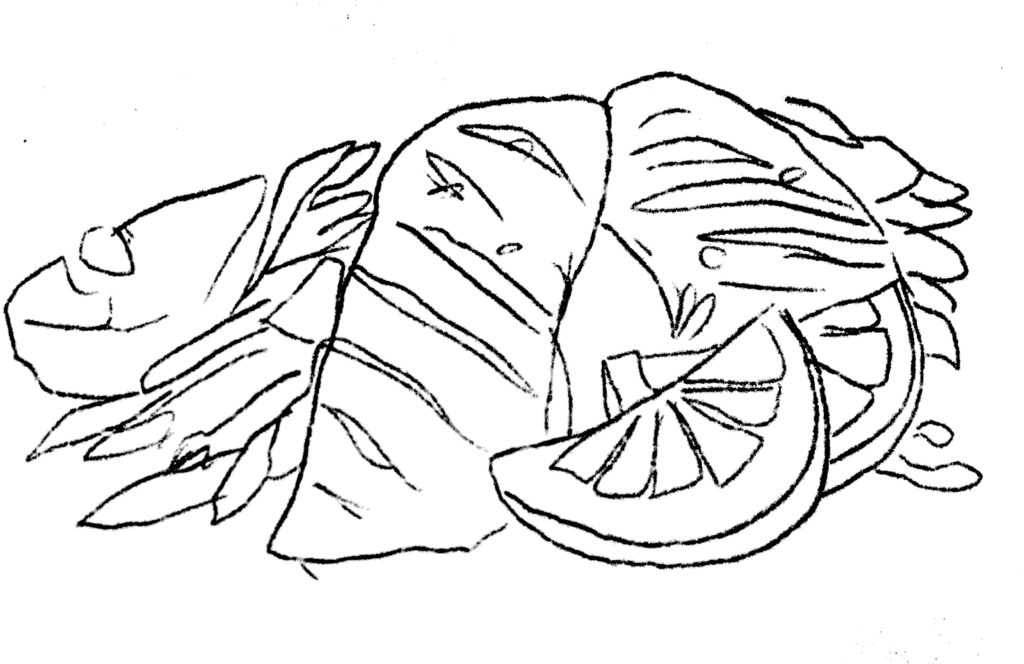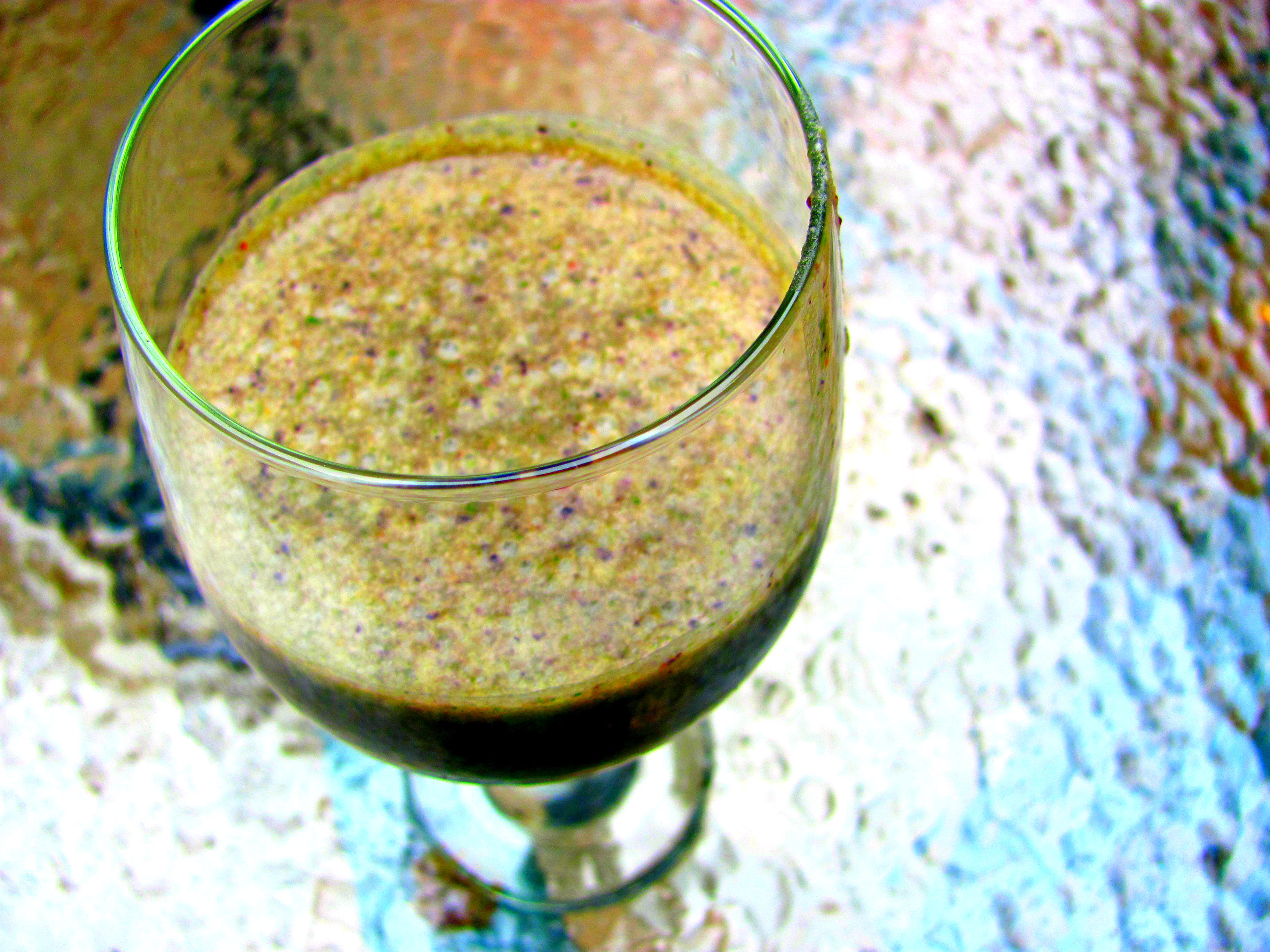
by Dr. Talia Marcheggiani, ND | Jul 31, 2015 | cancer, Detoxification, Endocrinology, Fertility, Health, Hormones, Preventive Medicine, Sexual Health, Weight Loss, Women's health

I’ve been noticing a trend in my practice, which places an emphasis on women’s hormonal health and mental health. Many women are consulting me for treatment of anxiety and panic attacks that have shown up in addition to other hormonal symptoms: painful periods, PMS, headaches, loss of libido, acne and weight gain. It just so happens that these women have also, for either treatment or contraception purposes, inserted a Mirena IUD, an intrauterine device that secretes small amounts of progestin (a synthetic form of progesterone) into the uterus.
The monograph for Mirena—produced and supplied by Bayer Pharmaceuticals—claims that Mirena is 99% effective for preventing unplanned pregnancy. Bayer informs us that Mirena can last in the uterus for up to 5 years and eliminates the need for daily pill-popping or condom use (although it does not protect against STIs). In addition, it is also an effective treatment for heavy menstrual bleeding. This explains why many women with gynaecological conditions, like endometriosis or fibroids, are recommended the Mirena IUD for alleviating symptoms of painful and excessive menstrual flow. Bayer’s claims, which are backed by evidence, make sense, especially when we consider that fibroids and endometriosis are estrogen-dominant conditions—adding more progesterone to the mix should help to “balance” things out. Incorporating a progestin-secreting device that acts on the uterus can help oppose the estrogen dominance that exacerbates the symptoms of these conditions.
The problem (of course there’s a problem, we’re talkin’ Pharma here) with Mirena is this: while the progestin exerts its effects locally, it does not act on the rest of the body. This may not be a “problem” with a capital P, if we understand that oral contraceptives that contain high progesterone are usually responsible for the “crazy” feelings women have when going on birth control—a lot of the “irritability”, weight gain, water retention and depression that women experience premenstrually is due to high levels of synthetic progesterone. However, we also know that progesterone, whose primary job is to maintain the uterine lining during pregnancy, has positive systemic effects. These effects include promoting mental relaxation and opposing estrogen dominance symptoms, which include weight gain, anxiety, panic attacks, fatigue, PMS, breast tenderness, acne, fibrocystic breast changes, cervical dysplasia, infertility, risk for certain cancers including breast cancer and cervical cancer and worsening of endometriosis and fibroids, which ironically happen to be the two conditions that the Mirena IUD is prescribed to treat.
Estrogen dominance is often not about having high levels of estrogen, but normal estrogen levels with insufficient progesterone to oppose some of its effects. Progesterone deficiency can look like estrogen dominance, when we examine a patient’s symptoms.
In my practice as of late, I’ve had a stream of women presenting with anxiety, panic attacks and heart palpitations that I strongly suspect are hormone-related. When I send them for blood work or salivary hormone tests I find that their progesterone levels are very low. They also may have symptoms of painful menstrual periods, stubborn weight gain and acne. And, you guessed it, all of them have the Mirena IUD. Many patients vaguely remember that symptoms began to rear their ugly heads, or worsen, after they got the IUD. Other colleagues have commented on observing the same trend in their own practices. Could the phenomena be linked?
There are several possible explanations for the progesterone deficiency/estrogen dominance phenomenon in clinical practice—these include, but are not limited to, chronic stress, vitamin deficiencies, impaired liver function or bowel function and exposure to exogenous estrogens such as BPA (found in plastic bottles, personal care products, the lining of tin cans and receipts, to name a few). Yet it seems that Mirena is a common factor in the majority of the cases I’m seeing. The possible reason is that, although Mirena provides progestins to the uterus, its hormones do not reach progesterone receptors in other areas of the body, for example the breasts, adipose tissue or brain, where progesterone normally will have an effect. While oral contraceptives act by preventing ovulation (some women don’t even menstruate while using the IUD), which in turn prevents the secretion of natural progesterone from the corpus luteum (formed in the ovary after ovulation), many of them also supply a dose of synthetic progesterone. Since the Mirena IUD only secretes progesterone to local tissues and therefore only acts at local receptors, it may be turning off the body’s ability to secrete natural progesterone—negative feedback loops might instruct the pituitary gland and the adrenal glands to stop making the body’s own progesterone.
As an naturopathic doctor, it can be hard to know where to proceed! I can try to balance hormones naturally with herbs that help promote an increase in progesterone production. I can also treat the adrenal glands so that they are able to produce more natural progesterone, rather than favouring cortisol production. However, not only might my efforts be fruitless, they may interact with the IUD’s contraceptive effects. I can try to promote the healthy excretion of estrogens by promoting liver detoxification and colon elimination, but the practice calls to mind an image of cleaning a dirty river while sewage pipes deposit their waste into it. How can my patients help their bodies clear out excess hormones while we both ignore the fact that the cause of hormonal deficiency may still persist?
While I sympathize with the allure of a hassle-free family-planning method and relief from the symptoms of heavy and painful periods, I can’t help but shudder when I see the often debilitating anxiety that my patients who use Mirena are presenting with. With regards to birth control, I have written in the past about healthy OCP practices and finding the right hormonal fit. There are also other, natural methods of family planning available, copper IUDs (however, there are other issues with the secretion of copper to local uterine tissue as well) and physical barriers. While other options may not be as convenient, or even as effective, they may promote a healthier hormone balance and improved overall health. It’s worth having a conversation with your doctor about options.
With regards to treating heavy menstrual bleeding with Mirena, natural alternative solutions are abundant! Naturopathic medicine offers a large array of therapies and treatment protocols aimed at treating the root cause: promoting healthy detoxification and elimination, supporting adrenal glands and balancing hormones through diet and nutrition. Not only does Mirena pose the potential for furthering hormonal imbalances, it covers up and even potentially exacerbates the underlying cause of why the symptom is happening in the first place, which is likely a case of estrogen dominance.
For treatment of hormonal conditions—endometriosis, fibroids, heavy and painful menstrual bleeding, PCOS, acne, weight gain and so on—I encourage you to explore natural options. In the meantime, I’ll have to figure out how to address my patients’ concerns while navigating against the current of synthetic hormones.
Want to balance your hormones, energy and mood naturally? Check out my 6-week foundational membership program Good Mood Foundations. taliand.com/good-mood-learn

by Dr. Talia Marcheggiani, ND | Apr 21, 2015 | Botanical Medicine, cancer, Detoxification, Diet, Endocrinology, Fertility, Food, Health, Mental Health, Nutrition, Skin health, Weight Loss, Women's health
 Estrogen is the dominant female hormone. It is actually a group of hormones, called the estrogens, that are responsible for the development of female secondary sex characteristics: the development of breast tissue and the proliferation of the uterine lining. Estrogen helps prepare the body for ovulation. Not all estrogens are created equal, however. Some estrogens are associated with an increased risk of certain female cancers, such as breast cancer.
Estrogen is the dominant female hormone. It is actually a group of hormones, called the estrogens, that are responsible for the development of female secondary sex characteristics: the development of breast tissue and the proliferation of the uterine lining. Estrogen helps prepare the body for ovulation. Not all estrogens are created equal, however. Some estrogens are associated with an increased risk of certain female cancers, such as breast cancer.
Excess estrogen, especially in the form of these so-called “bad” estrogens, seems to be a common theme among women in North America. Stress, caffeine intake, synthetic estrogens in birth control pills and hormone replacement therapy and xeno-estrogens from cleaning products, plastics and cosmetics are among some of the causes of excess levels of estrogen in the body. Because of these environmental factors, many women suffer from something called “Estrogen Dominance”.
Symptoms of estrogen dominance include stubborn weight gain, anxiety, premenstrual symptoms of breast tenderness, acne, irritability, fatigue and brain fog. Estrogen dominance can contribute to worsening of health conditions such as infertility, fibrocystic breasts, repeated miscarriages, uterine fibroids and endometriosis as well as increase the risk of developing certain cancers.
Estrogen detoxification can be done effectively through a healthy diet that aims at improving estrogen clearance in the liver and regulation of the action of estrogen at cell receptors. By following this diet, patients can experience an improvement in hormonal health conditions, clearer skin and weight loss.
This diet is adapted from Dr. Joseph Collins RN, ND at yourhormones.com.
Cruciferous vegetables: Vegetables from the cabbage family, such as cabbage itself, cauliflower, broccoli, brussel sprouts, kale, bok choy, spinach, collard greens and other leafy greens are rich in a nutrient called indole-3-carbinol, or I3C. I3C gets converted to diindolymethane (DIM) in the body, which is responsible for clearance of excess estrogens in the liver. Consume a minimum of 3-4 servings of these vegetables per week.
Rosemary: Rosemary, when added to meats as a seasoning enhances the formation of good estrogens (the ones less likely to cause cancer or health concerns). Rosemary has the added benefit of antioxidant activity. It also enhances memory and mood and helps with thyroid function, improving weight loss, metabolism and energy levels.
Flaxseed: 2-4 tablespoons per day of ground flaxseed promotes healthy estrogen metabolism. The seed contains lignans, which help clear excess estrogens from the body. Flax also contains phytoestrogens, which control how much estrogen can bind to estrogen receptors. This means it can decrease excess estrogen activity or increase deficient estrogen activity, making it an effective remedy for a variety of female health complaints. Flax is rich in healthy omega-3 fats and contains fibre, making it an important remedy for treating inflammation and constipation. Flaxseed is digested and absorbed when ground, and best stored in the fridge as the oils in the seed quickly go rancid at room temperature.
Salmon and other fatty fish: Salmon and other fatty fish contain EPA, an omega-3 fatty acid, is an important anti-inflammatory oil. It has been shown to be effective in treating inflammatory conditions, cardiovascular disease and mental health conditions, such as depression, anxiety and ADHD. It helps increase the formation of “good” estrogens in the body. Enjoy 2-3 servings of fatty fish per week, or supplement with a quality fish oil.
Isoflavones: Isoflavones, such as those found in soy, are antioxidants effective at increasing good estrogens in the body. Since soy is often heavily processed, using herbs such as Trifolium pratense, Pueraria montana and Pueraria lobata either in teas, capsules or tinctures, will help provide an adequate dose of isoflavones.
Activated folic acid: Folic acid is responsible for converting estrogen into a very healthy, methylated form that can decrease the risk of certain cancers. Many people are unable to convert folate into the active 5-methyltetrahydrofolate, which is essential for hormone metabolism, DNA synthesis, homocysteine metabolism and nervous system function (good mental health, memory and energy). Other B vitamins to supplement with are B6 and B12 as they help folic acid metabolism estrogen into their anti-cancer form. Folic acid is found in dark leafy greens, which also contain your daily doses of indole-3-carbinol.
If you are experiencing symptoms of estrogen dominance in the form of a female health complaint, book an appointment to learn what else you can do to experience healthy, happy, pain-free periods and look and feel your best. Contact me.
![SNP! Crackle! Pop!: Adventures in Genetic Testing]()
by Dr. Talia Marcheggiani, ND | Nov 22, 2014 | Detoxification, Evidence Based Medicine, Genetic testing, Medicine, Mental Health, Preventive Medicine

Rosalind Franklin: She might have been left out of the Nobel, but at least she gets the honoured spot as the featured image of this post. Lucky her. (Sorry, readers, just a little inside joke for the molecular biologists out there). Image source: wikipedia.org
“Do you find yourself easily able to bounce back from emotionally-charged situations?” Dr. Emily Fitzgerald, ND, asked while sitting across from me at her white desk. “The fact that this part of the gene is present and not deleted means that you are the ‘cool and collected’ type, the ‘Wolf of Wall Street’, if you will.” She went on, “We find here through our testing that most naturopathic doctors have the other version of this gene.”
Great, I thought, I was genetically unfit to practice naturopathic medicine; it was like something out of the movie GATTACA. I couldn’t help but feel let down by my genetic coding. I had always thought of myself as an empathetic and caring person and yet science was telling me the opposite. Wolf of Wall Street? Seriously? I hated the movie. In fact, I felt more at home sharing a collective vegan lunch with protesters occupying Wall Street than bidding on stock options. Surely this doctor must be mistaken. But alas, it wasn’t her fault. She was simply a messenger, reading out to me what was clearly spelt out in my nucleic acid.
Genes are funny things. We inherit one set from our mothers and another from our fathers. They don’t change throughout our lives and they are responsible for coding all of the proteins, enzymatic reactions and cellular structures that make up our beautiful bodies. However, I once read that interpreting the human body through genetic code is analogous to interpreting Shakespeare’s works by studying the alphabet; it’s not even a recipe, but a mere grocery list.
Dr. Mohammed, the CEO of YouNique Genomics, a Canadian lifestyle genomics company, will also assert that “genes aren’t everything.” Our environment has a lot to do with how they are expressed and this simple fact can explain why, despite the fact that I am missing part of the “emotional gene”, I am still able to regard my patients with positivity, appreciate literature and cry at sappy love stories.
Despite the Nature vs. Nuture debate, there is still a lot that can be garnered from looking at genetic coding. By studying my expression of SNPs (single nucleotide polymorphisms), or small variations in DNA, on only 14 of my 23,000 genes, Dr. Fitzgerald was able to tell me that I am a passionate person, I am capable of regulating my emotions when confronted with difficult situations, I can drink espressos after dinner without affecting my sleep and the Paleo Diet will only lead me to overeat. She told me how dopamine is metabolised in my brain, how my liver detoxifies and how my body digests cholesterol and lipids, giving me information about my long-term risk for heart disease. And she did all of this without looking at her crystal ball, not even once.
I previously associated genetic testing with detecting the risk for diseases such as early-onset Alzeimer’s or breast cancer. I had always thought that knowing one’s genetics was dis-empowering. After all, you’re born with your genetic code; what is the use of learning about something that you can’t change? It seemed to me as useful as tying yourself to a set of train tracks, powerless to stop yourself from being crushed under the freighter speeding towards you.
My mind changed when I learned about functional genomic testing like the kind offered at YouNique. Functional, or lifestyle, genomics don’t predict disease risk but rather only test for genes whose expression can be affected by lifestyle. The test I received was called the SNaP Shot. It looks at 14 genes, including those that code for dopamine metabolism, liver detoxification, methylation pathways and cardiovascular health.
One of the noteworthy pieces of information I learned was that my detoxification pathways are like a leaky faucet with a clogged drain. The enzymes that run Phase I liver detoxification, which make many toxins more toxic, are over-expressed, meaning that they work better than the average person’s. However, I have less than optimal Phase II detoxification, which is responsible for neutralizing these toxins and allowing them to be safely eliminated from the body. This means that I need to start supporting my liver and increasing my production of glutathione, an important antioxidant. If I don’t do this? It’s written in my DNA, and perhaps that stars, that my risk of cancer from toxin exposure could be higher than normal. I bought a bottle of milk thistle the next day.
I also learned that my body has a 30% reduced ability to use folate, meaning that I need to increase my intake of this vitamin or else risk problems with inflammation, which has wide-spread affects. I also found out that I respond poorly to saturated fat intake: it makes me hungrier by stimulating ghrelin, the appetite hormone, and can lead to weight-gain if my diet is uncontrolled. This is relevant in the natural health world because the Paleo Diet involves eating a diet high in saturated fats to achieve the exact opposite aim: controlling hunger. Genetic testing is the future!
What was the immediate result of the information I received by donating a vial of blood and an hour’s consultation time to YouNique? I learned that I need to support my liver (hence the milk thistle) and increase my folate intake. The truth of my long-term disease risk is there, written in my genome, which won’t change, that much is true. What I hadn’t considered, however, is our power to rewrite the future, by using naturopathic medicine to work with the building blocks we inherit. Our genes will always be the same but what we learn about how they are expressed will continuously evolve. Genomic testing, as Dr. Mohammed pointed out, is a living and breathing test. With the same test results, our treatment plans can evolve as our knowledge in the area grows. The more science learns about how lifestyle affects our genes, the more we can work with what we’ve got.
To end off, Dr. Mohammed told me a story in which he was examining a rather unfavourable genetic report before meeting the patient it belonged to, a naturopathic practitioner. When the ND entered the room, Dr. Mohammed was taken aback. Surely this healthy, spry, attractive individual was not the same person whose genes indicated an increased risk of obesity, inflammation, toxic exposure and heart disease? However, this individual had chosen to “walk the talk”, as we say in the field, and live his life in a healthy and holistic way. And, by doing so, he was able to change the course of his own personal health history; a great novel whose prologue began being written moments after his conception but whose conclusion he will be able to co-write. Shakespeare was given the alphabet. We are given a crazy combination of four nucleotides. Shakespeare wrote Hamlet. Through lifestyle genomics, I’ve come to realize that what we write with the information we’re given just might be up to us.
To learn more about lifestyle genomic testing and how it can help you affect your own health, contact me.
by Dr. Talia Marcheggiani, ND | Mar 25, 2014 | Cleaning, Detoxification, Health, Nature, Self-care
Spring is about cleaning. The April rains wash away the dirt and grime from the winter, people emerge in fresh, light clothing, we tackle the stacks of papers on our desks, sweep out dust and clutter, open the windows to allow fresh air to ventilate our lives and donate old, knobbing winter sweaters to charity. Spring is also the season of the Liver and Gallbladder in Chinese Medicine. This means that our body’s ability to clean revs itself up at this time of year as well. Some wonderful plants also push their way through the ground. Pick some from your garden and start throwing them into everything you eat. Spring is in the air!
(more…)
by Dr. Talia Marcheggiani, ND | Jan 24, 2014 | Acupuncture, Autoimmune, Detoxification, Exercise, Food Sensitivities, Health, Mental Health
Anywhere from 10% to 55% of the population suffers from chronic pain. It is one of the conundrums of conventional medicine because, once the initial trauma (i.e.: the broken bone, bruising or cut, etc.) is dealt with, there are not many options for managing it. Pain medications usually have a host of side effects and offer only modest results. Many people are forced to live with pain, watching as their lives and well-being eventually deterioriate and they lose the ability to perform the activities they once loved. Thankfully, naturopathic medicine offers a variety of solutions for treating pain that can give you the chance to get your life back.
(more…)

by Dr. Talia Marcheggiani, ND | Jan 17, 2014 | Balance, Detoxification, Diet, Digestion, Food, Health

Eat up those whole foods, just save the raw until spring.
A month’s worth of holiday excesses, combined with this wet, soggy weather can contribute to feelings of bloated, puffy lethargy. I feel that, at this time of year, everyone is shunning the scale and examining their side profiles in the mirror, lying down to button up jeans and secretly blaming life’s woes on apple pie. For many, weeks of over-doing it in December, mean a January of self-induced deprivation to get back on track and re-emerge as svelte and bounding again.
It seems intuitive to balance a period of indulgence with deprivation. If weeks of unrestricted treats pushed us off track, then surely a firm, hard shove in the other direction should get us back on the rails. However, as any winter driver or horseback rider knows, sometimes all we need is a gentle nudging to steer our stead back on to the right path.
This year I’ve held myself back from diving off the cleansing deep end. I’ve decided that this year I need gentle nourishment, not another nagging voice in my head, moulding my behaviour one way or the other. I need far more carrots (cooked delicately in stews, not raw) than sticks. I’ve decided to nurture my relationship with food using diplomacy, not by summoning the cavalry.
(more…)

by Dr. Talia Marcheggiani, ND | Dec 9, 2013 | Canadian College of Naturopathic Medicine, Detoxification, Health, Preventive Medicine
Preventive medicine is a buzz-phrase that many medical professionals love to throw around. However, in the conventional medical system the term prevention is often used to apply to what should be known as screening. Tests such as PAP smears, mammograms and colonoscopies do not prevent cancer, they simply attempt to screen a large portion of the population to detect the presence of these cancers at an early stage, when treatment can be most affective. They are recommended for silent diseases that only produce symptoms once they are advanced, but they are screening exams, they do not, in and of themselves, prevent cancer. If one of these tests comes back positive, it means that the patient’s body is already along the course of disease and needs treatment.

(more…)

by Dr. Talia Marcheggiani, ND | Sep 30, 2013 | Asian Medicine, Detoxification, Digestion, Exams, Food, Health, Mindfulness, Traditional Chinese Medicine

In Traditional Chinese Medicine, the Spleen organ can be more closely equated with the pancreas, rather than the western spleen, whose main function is simply to store blood. The TCM Spleen is responsible for digesting food and converting it into energy, much in the way the pancreas releases insulin to allow the body’s cells to absorb ingested glucose, providing the cells with energy. Unlike the pancreas, however, the TCM Spleen is also responsible for providing warmth and vitality to the body, providing energy for immune function and the mental energy to produce industrious and creativity work. The Spleen belongs to the Earth Element and its main season is late Summer and early Fall, right around the time that students dust off their backpacks and head back to school.
(more…)
by Dr. Talia Marcheggiani, ND | Sep 18, 2013 | Ayurvedic Medicine, Detoxification, Self-care, Skin health, Stress
I await my first real patient: a referral from a friend. I know this new patient suffers from chronic migraines, related to stress, and I am excited; I already have some ideas about what to prescribe. It’s been 9 long years since I decided that I wanted to enter into a healing profession and soon I will be face-to-face with a real human, someone who requires the skills I have so painstakingly acquired over the years through hours of book-study. I am elated. The appointment is cancelled, however, as I am attacked by a migraine headache myself, one that I used to suffer from regularly but haven’t experienced in months. The headache is all-encompassing and I am forced to go home. It’s only on reflection, months later, that I realize the irony of being forced to cancel an appointment due to being afflicted by an attack of the very condition I was to treat.
(more…)

by Dr. Talia Marcheggiani, ND | Jul 23, 2013 | Allergies, Autoimmune, Detoxification, Diet, Digestion, Food, Health, Nutrition, Skin health

There are many types of immune cells in our bodies and various groups that they belong to: leukocytes, lymphocytes, macrophages, natural killer cells, etc. Some of the major contenders, and the ones that are involved in autoimmune disease and allergic conditions, are a type of lymphocyte called the T cells. T cells can be divided into more groups: among them cytotoxic, “killer” T cells and helper T cells.
The helper T cells have a role in presenting inside invaders to B cells and other cells of the immune system, while the killer T cells kill the bad guys directly. The helper T cells can be divided into two more groups: Th1 and Th2 (the h stands for “helper”). Th1 cells are involved in the first part of the immune system, showing the invaders to macrophages, which eat the invading pathogens, Pacman style, while also sounding the call that the body has been invaded and recruiting more immune cells to the scene. The Th2 cells show the invaders to other lymphocytes, the B cells, which make antibodies, providing the body with memory of what to do when the same invader strikes again.
(more…)












